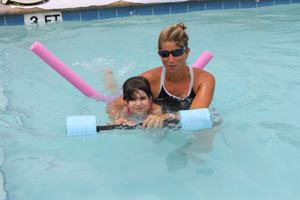South Florida Drowning Prevention

South Florida is the worst area for infant drowning and has been ranked as the number one state for infant drowning in the United States by the U.S. Consumer Product Safety Commission. According to studies done by the CDC (Centers for Disease Control and Prevention) one in four fatal drowning victims is a child under the age of fourteen. Drowning is the second leading cause of death in children of this age group preceded only by automobile accidents.
Following safety measures and guidelines that have proven to reduce the risk of infant and child drowning can prevent these unfortunate fatalities. There are four basic drowning prevention measures that have been tested and are proven to reduce infant and child drowning risks. These preventive measures include barriers, supervision, swim lessons and CPR certification.
Barriers keep children away from swimming areas by enclosing them in a fence. This keeps small children from wondering into a pool area and accidentally falling into the water. Most young children drown within the first five minutes of entering the swimming pool area. Installing a four-sided pool fence with locking gate can prevent this.
Adult supervision is a key component in preventing infant and child drowning. A responsible adult should be monitoring a child without distractions at all times around water. This can be in the bathtub, near a bucket of water or a swimming pool or natural waterway. Most children under age one drown in tubs, buckets or toilets. Most children age one to four drown in residential swimming pools. By having an adult supervise children around water drowning can be prevented.
Teaching a child to swim is not a guarantee that a child will not drown but it is a measure that can greatly reduce this risk. Children who have had swim lessons learn to swim to the pool edge for rescue as well as float while calling for help. These children are given skills and knowledge how to feel clam in the situation and get help in methods that they as a child can perform.
As an adult taking the initiative to learn CPR greatly increases a child’s chance for survival after a fall into the water. By taking CPR lessons an adult can help a child until paramedics arrive expanding a child’s window for rescue and recovery from a drowning. Classes can be obtained for a small fee and take a short period of time to obtain. It’s an excellent way to be prepared for the unexpected. By following these four simple drowning prevention guidelines adults can prevent a catastrophe from occurring.
For more information about south Florida drowning prevention visit www.swimwithmrblue.com.
- Swim Lessons in Davie: Empowering Your...
- Children Swim Lessons in Parkland:...
- Swimming Lessons in Coconut Creek: Swim...
- Empower Your Child’s Journey with...
- Dive into Confidence with Swimming...
- Dive into Confidence with Our Swimming...
- Parkland and Coral Springs Swim Lessons...
- Parkland and Coral Springs Parents: ...
- Parkland Swim Lessons Can Save Your...
- Swim With Mr. Blue Shares Pool Safety...
- Accidental Drowning In South Florida...
- Autism Swimming Lessons South Florida
- South Florida Swim Safety For Autistic...
- Babies Swimming Lessons
- Safety Skills: Baby Swim Class
- CPR Classes South Florida
- Be Prepared With CPR Training In South...
- Infant Swim Classes
- Infant Swim Lessons
- Kids Learn To Swim
- Kids Swim Safety
- Kids Swimming Lessons
- Safe Kids Swimming Wear
- Kids Water Safety
- Miami Infant Drowning
- South Florida Drowning Accidents
- South Florida Drowning Prevention
- Famous South Florida Swimming Pools
- South Florida Swimming
- Summer Equals Kids And Swimming



